Nov
29
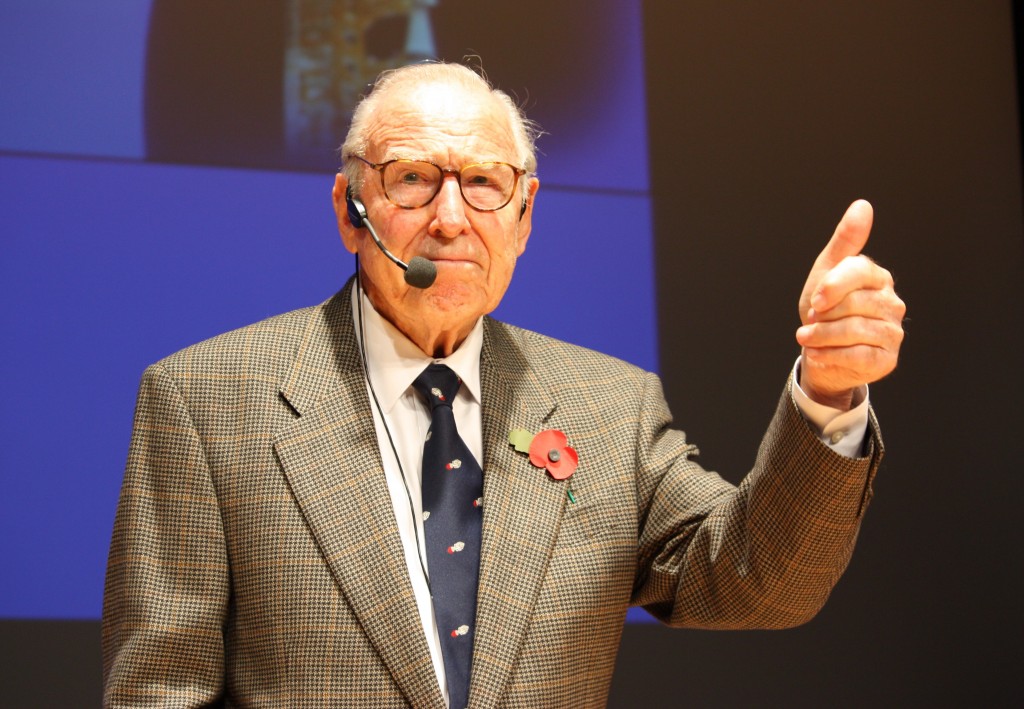
Captain James “Jim” Lovell, a veteran of four space flights, was part the Apollo crew that flew closer to the Sun than any other, and also holds the unfortunate accolade of being the only person to fly to the Moon twice and never step foot on it.
At 87, he’s starting to look a little frail, but that doesn’t stop him holding court for over an hour in a room packed with space enthusiasts. I’m back in Pontefract for the latest in the incredible series of Space Lectures and I, like the rest of the audience, am totally captivated by Captain Lovell.
“There are three types of people in the world”, says Lovell. “Those who make things happen, those who watch things happen, and those who wonder ‘what happened?”. Lovell certainly has had a life filled with adventure, so I’d have to conclude he fits squarely in the former group.
Lovell took part in the first astronaut selection process in 1958, making it down to the last 32, but he lost out to John Glenn, Wally Schirra and the other five guys who went on to become known as the Mercury 7. “I don’t know why” he says, with a glint in his eye.
When the second astronaut selection process took place – this time for the Gemini programme – he applied again.
“By gosh I was selected” says Lovell, with a hint of excitement still present in his voice. “It was the golden age of our space activities” he says, “the whole population was excited about space”.
Gemini 7
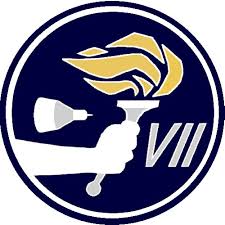 Lovell flew on Gemini 7, which he describes as a medical flight. At that point there was still a lot to be learnt about how the body would survive in space. “Some of the doctors didn’t think we could live in zero-gravity” he says. “We evolved in a gravity-based environment, perhaps we needed gravity for breathing and swallowing?”
Lovell flew on Gemini 7, which he describes as a medical flight. At that point there was still a lot to be learnt about how the body would survive in space. “Some of the doctors didn’t think we could live in zero-gravity” he says. “We evolved in a gravity-based environment, perhaps we needed gravity for breathing and swallowing?”
NASA calculated that maximum time it would take to get to the Moon and back and based the length of the Gemini 7 flight on that to test the body’s reaction to space. At just a fraction less than two weeks in duration, Gemini 7 was the longest of the Gemini missions. The flight had 23 experiments on board “and it was really bad news!” says Lovell, reminding us that the size of the craft is “smaller than a VW”.
“We were guinea pigs” says Lovell, explaining they wore EEGs on their heads, heart rate monitors, and blood pressure cuffs on their thighs – which “blew up for two minutes, then off for six minutes, then again for two minutes.. we were there two weeks!”
One of the experiments was to look at the change in calcium level in the body, and whether that changed when they were in space. You need calcium to keep your bones strong on Earth, but what about in microgravity where your bones are not subjected to the same force? Would the calcium just “flow off”?
For two weeks before their flight everything about them was monitored, how much they ate, drank, and even how much they perspired. The team knew exactly what food they were eating in space and then measured everything for 10 days after the flight while they were in isolation in order to see if there was any change in their calcium levels.
The experiment sounds arduous, to say the least, and Lovell wryly announces “Ladies and gentlemen – I can tell you that a two week mission is not the right length of time to do a calcium balance study”. He’s right of course, and studies on calcium balance in space continue to this day, with Scott Kelly and Mikhail Kornienko currently on the space station carrying out a year-long mission.
There were important things learnt on their mission. Muscles become weak and microgravity has an effect on blood flow and the heart. “Our heart rate was 10 beats per minute slower, and the volume of blood decreased” says Lovell. First the crew was told that they should drink more water, but actually you don’t need quite so much blood in space, since it doesn’t pool down in your feet and legs like it does on Earth.
Gemini 12
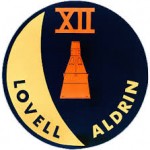 “My second flight was kinda different” says Lovell, talking about Gemini 12, the final mission of the Gemini programme.
“My second flight was kinda different” says Lovell, talking about Gemini 12, the final mission of the Gemini programme.
On Gemini 4, Ed White did the first US spacewalk, he went out attached to oxygen supply, and he floated. On Gemini 9, 10, and 11, NASA tried to get astronauts to do work while on a spacewalk.
“They all failed” says Lovell, “their bodies became overworked”. “We had forgotten the third law of motion, for every action there is an equal and opposite reaction”. Each time they touched the spacecraft it would react, and that was causing problems.
Some “brilliant engineers” came up with the idea for the neutral buoyancy lab – or in those days, a swimming pool with a mock-up space module in the water so they could practice spacewalks. Lovell recalls crewmate Buzz Aldrin in a spacesuit in the pool being reminded “don’t swim” – because in space that would of course be impossible. This allowed them to plan the foot and hand holds on the craft, and “it worked quite well” says Lovell. Gemini 12 was the first mission to show that extravehicular activity was feasible. Nowadays training in huge pools is a standard part of training for astronauts.
Apollo 8
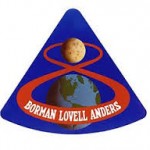 Lovell’s third flight, Apollo 8, was never meant to fly to the Moon, but “1968 changed it completely”. The US received information that Russia was going to fly a crew around the Moon in the autumn of 1968, but they had several failures during the Zond programme. “The re-entry wasn’t right” says Lovell, referring to Zond 4. The Russians successfully sent Zond 5 around the Moon in September 1968 with a crew of tortoises, flies, worms and plants, but there were still some concerns and this led to many arguments back and forth around the safety of a crewed mission.
Lovell’s third flight, Apollo 8, was never meant to fly to the Moon, but “1968 changed it completely”. The US received information that Russia was going to fly a crew around the Moon in the autumn of 1968, but they had several failures during the Zond programme. “The re-entry wasn’t right” says Lovell, referring to Zond 4. The Russians successfully sent Zond 5 around the Moon in September 1968 with a crew of tortoises, flies, worms and plants, but there were still some concerns and this led to many arguments back and forth around the safety of a crewed mission.
During this time, things were progressing in the US, though not entirely as planned. Grumman, who were building the Lunar Module (LM) announced that they “can’t make and deliver the LM in 1968”. This caused a bit of an issue for Apollo 8, which was slated to test the LM in Earth orbit, and take the Command Module (CM) to a high altitude so that they could reach Moon-return speeds and test the heat shield on the CM.
“Without the lunar module, what should we do?” asks Lovell. It was decided that if Apollo 7 tested the CM and it was a successful test, Apollo 8 would be changed so that it would go all the way to the Moon, circumnavigate it, and come back.
It was in summer 1968 that they got word that the mission had changed, and they were scheduled for launch in December the same year. “I spent many a day at MIT learning new guidance systems to navigate to the Moon” says Lovell.
“1968 was kinda a bad year, especially in the US” says Lovell, “there was Vietnam, riots, assassinations” so it was an important mission in terms of morale.
Apollo 8 launched on December 21st 1968, “the navigation was successful, and we saw the ancient old craters on the far side of the Moon” says Lovell. “We were like three school kids looking through a candy store window.”
“We were looking for landing sites on the nearside of the Moon” explains Lovell. “We saw this Earth come up from the lunar horizon – really a fantastic sight – the whites and blues of the Earth, the tan of the deserts”.
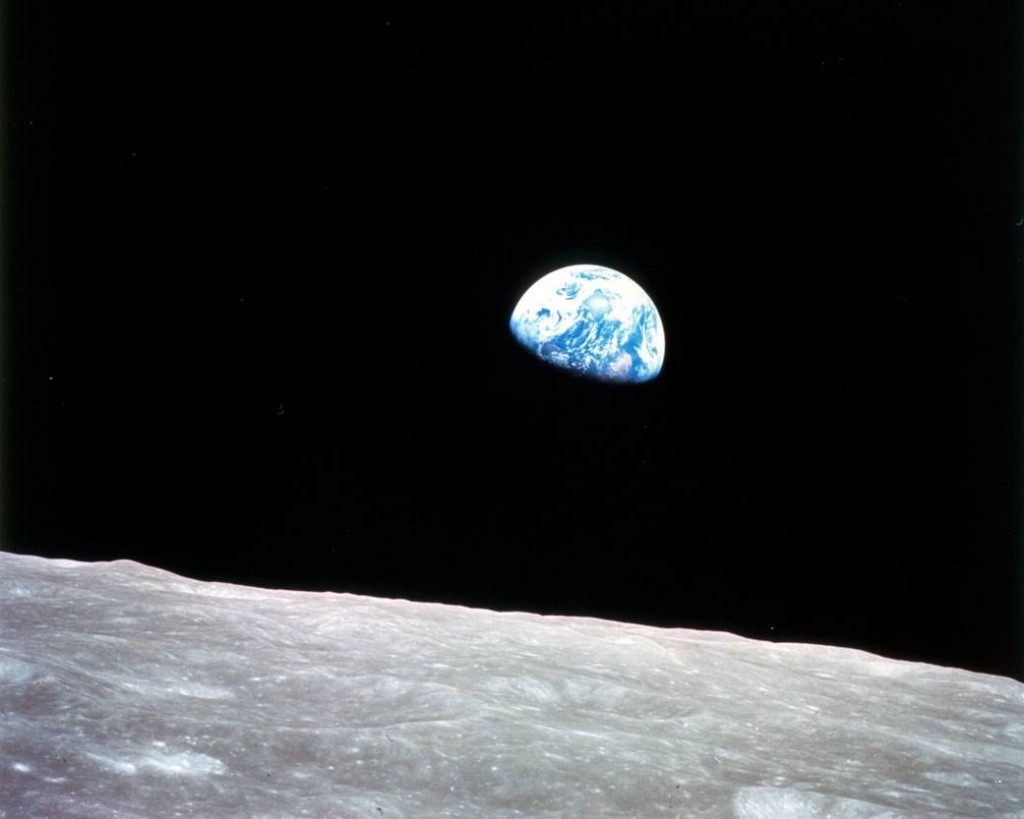
Credit: NASA
The resulting photograph – famously known as “Earth-rise” – springs to instantly to mind, but here is someone remembering seeing that sight for real.
“Earth” he says “just 240,000 miles away, looked totally uninhabited, just tucked away by a normal star, tucked in a normal galaxy”.
“How fortunate we are that we have this place to live” he says wistfully. “People often say when you die you go to heaven, but ladies and gentlemen, you go to heaven when you’re born – this is the place that is really heaven.”
Lovell says that Apollo 8 is the most significant flight of his career, and since he was commander of the drama-filled Apollo 13 mission, I’m quite surprised to hear that.
Apollo 13
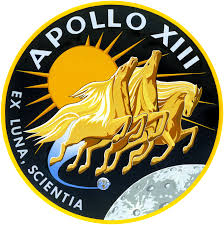 “Apollo 13 was a flight that was plagued by bad omens from the beginning” he begins. “Years before we flew, the company producing the oxygen tanks dropped one on the floor, it was refurbished and it should have been fine”.
“Apollo 13 was a flight that was plagued by bad omens from the beginning” he begins. “Years before we flew, the company producing the oxygen tanks dropped one on the floor, it was refurbished and it should have been fine”.
That fateful tank wasn’t even meant to be used on Apollo 13, it was meant for Apollo 10, but it got switched. Jim Lovell himself was switched from Apollo 14, it was Alan Shepard who was due to fly on Apollo 13. Agreeing to the swap just six months before the flight, his wife was less than impressed with the decision, saying “you did what?! Don’t you know about 13?” How those words must have haunted her…
The crew did a countdown demo test, with the big booster, all consumables, but no fuel. Everything was timed down to zero to check all the systems worked. The test was perfect – “no problems” – but after the test, as the ground crew tried to remove the oxygen tanks, one tank wouldn’t come off. It was that tank, the one that had been dropped all those years earlier.
Inside the tank there was a little heater that was used to burn a little of the oxygen off, the ground crew decided that they could save a bit of time by leaving the tank where it was and burning off the oxygen using the heater. One problem, in flight power for the rocket systems was 28V direct current, while the ground power was 65V DC.
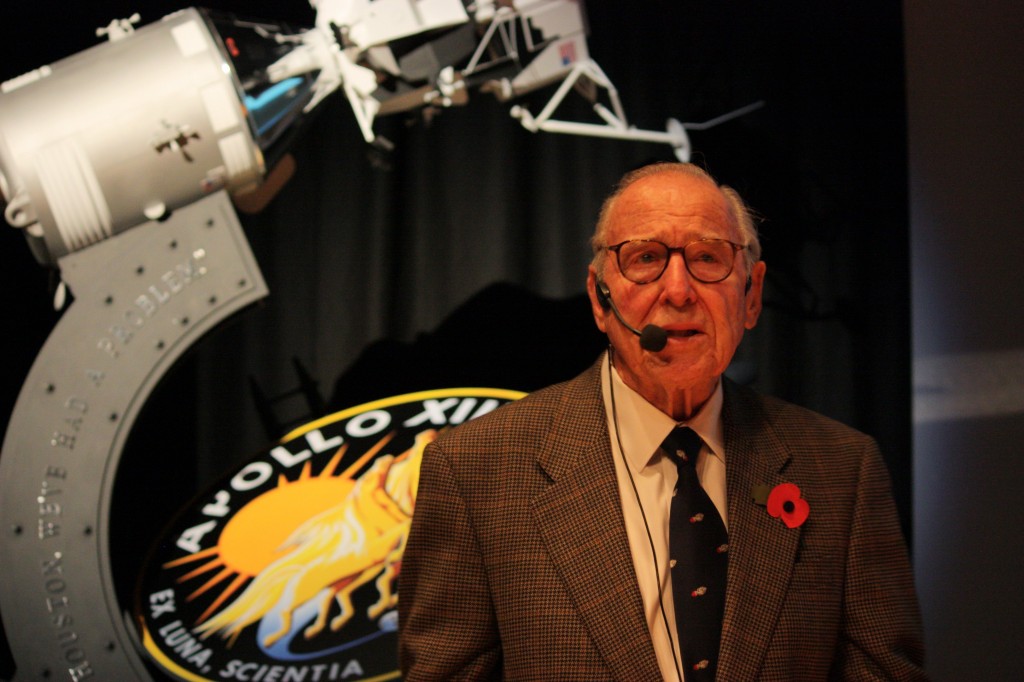
This high voltage welded the contacts from the thermostat together, meaning that instead of shutting off the heater when the temperature was too high, it was actually able to heat the inside of the tank to around 900 degrees Fahrenheit, melting the Teflon inside. The result was that on launch day, when they filled this tank with oxygen, “it was a bomb waiting to go off”.
That wasn’t the only piece of bad luck. The crew were exposed to measles, and while the others were okay, Ken Mattingley, a bachelor, was not immune. He was dropped from the crew and replaced by Jack Swigert.
“It sort of felt like a bad omen coming true” says Lovell, “but we had a good guy with Jack”.
So we get to launch-time for Apollo 13 – 13:13 CST on April 11th 1970. The first stage was perfect, and was jettisoned fine, and then the central engine in the second stage shut down. It was a good job as Lovell says, “if not it would have disintegrated and taken the other four”.
The crew orbited Earth and everything seemed okay, so they set off a free return course to the Moon – whereby you “coast” at 24,000mph all the way to the Moon and then the Moon’s gravity helps to swing you back for a safe return to Earth. All the Apollo missions, from 8-17 started on a free return trajectory.
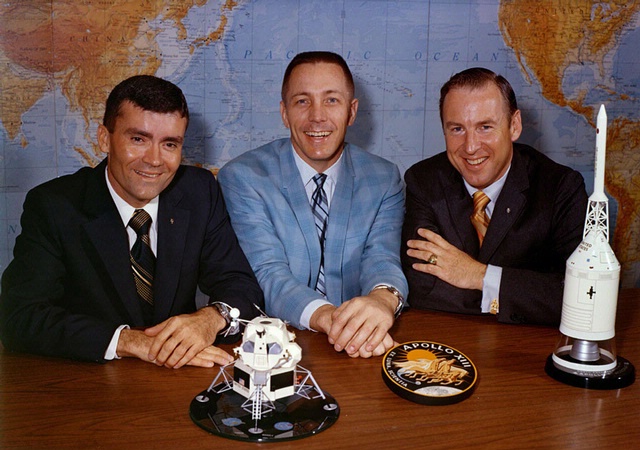
Apollo 13 crew – Fred W. Haise, Jr., John L. Swigert, Jr. and James A. Lovell, Jr.
Mission control came through on the radio to let them know that if they wanted to land at Fra Mauro they need to change the attitude of the spacecraft slightly. This now meant that if an engine failed, their course would take them to the Moon, they’d go round and come back to Earth, but they would be 40,000 miles away – too far to be caught be Earth’s gravity.
On April 13th (of course!) the now famous explosion occurred. Once again Lovell was faced with a change to his mission, except this time the change was “from landing to survival”.
The crew wondered if they had been hit by a meteor and set about trying to close a hatch so that they could maintain pressure in their part of the craft at least. Jack Swigert tried several times but couldn’t manage it, neither could Lovell “so we put it on the catch and tied it down” he says.
“We realised that we weren’t dead yet, so it wasn’t a meteor” says Lovell, deadpan. Out of the window he could see a substance leaking out. “It dawned on me that we were losing oxygen” he says, “the gauge on one tank was at zero, and the needle on the other was coming down”.
“I knew the only way to come home would be to use the lunar module as a lifeboat” he says.
Mission control couldn’t – indeed didn’t – believe it at first, after all, there are so many back-ups in place.
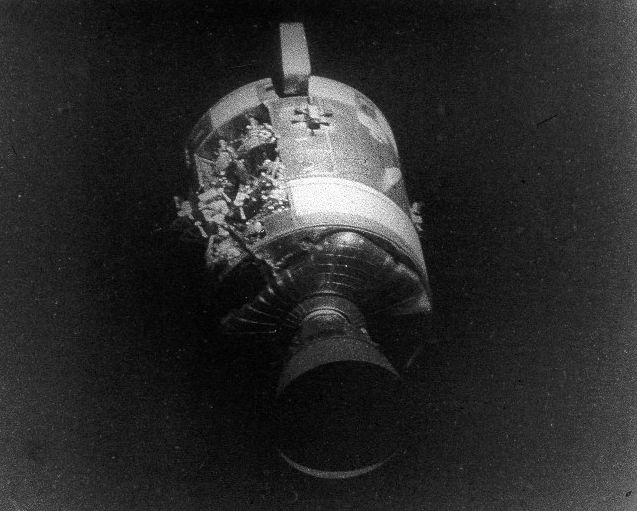
Apollo 13′s damaged service module. Credit: NASA
They lost telemetry, then radio for a while, then mission control decided “you know what this is? It’s a comms problem”. Perhaps it was a solar flare they thought, that’s probably the only problem, “but we knew what had happened” says Lovell.
“The LM is a very fragile device” says Lovell, “the material is so thin you could punch a hole through if you wanted too, and it was designed to last for 45 hours, with two people”.
“After the explosion, I kept counting the crew” he says, “one, two, three”.
“How do we get home?”
The first thing the ground came up with was to get them back on a free return course so that they would “somehow intercept Earth”. Still, that sounded better than skimming round the Earth at 40,000 miles altitude, returning to the Moon, and going round and round, he says.
“Is the command module dead?” they asked. “Yes” replied Lovell. “Well you can use the lunar module as a lifeboat”. “Yes I’ve already thought about that” said Lovell.
Using the attitude control system (ACS) on the lunar module they tried to change the spacecraft’s attitude, but it was never designed or tested to work when still connected to the command and service module. This added 60,000lbs of dead mass that wouldn’t normally be fighting against the ACS on the LM. The centre of gravity was in the wrong place and that caused problems, but the apparently unflappable Lovell merely comments that “you’d be surprised, how quickly you learn when you’re in trouble”.
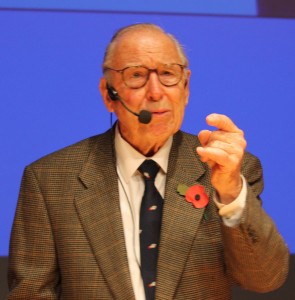 The next crucial manoeuvre involved blasting the engine while they were on the far side of the Moon in order to speed up their return time. But there would be no communication connection with mission control from behind the Moon, so it was incredibly important that they noted the instructions and timings down correctly before they lost contact.
The next crucial manoeuvre involved blasting the engine while they were on the far side of the Moon in order to speed up their return time. But there would be no communication connection with mission control from behind the Moon, so it was incredibly important that they noted the instructions and timings down correctly before they lost contact.
Lovell, as Commander, asked for the rest of the crew to listen for instructions too, to make triply sure they took them down correctly. “Are you ready to copy?” said mission control, and Lovell realised that his two companions weren’t even listening.
“They were looking at the Moon, with cameras, taking photographs”. When he chastised them they said “well, you’ve been here before!”
“They were so interested in the far side of the Moon that they forgot we were in trouble” says Lovell. “I reminded them, if we don’t get home, you won’t get your films developed!” somehow still able to make light of their situation.
They switched on the engine for four minutes, and then “we switched off the ‘exotic’ systems that you can do without” says Lovell, listing off guidance computer and autopilot among them.
“We were left with only the radio, and a fan to keep air circulating” he says. “Things were kinda quiet”.
“When it’s quiet and you’re in a tight spot, you start to think” says Lovell. Swigert worried that they might exceed escape velocity, and Lovell reminded him they were back on the free return trajectory.
“Don’t worry, we have it made” he remembers saying, “but I was wrong”.
Returning to Earth from the Moon is a tricky business, you have to return at a specific angle, no less than 5.5 degrees, no more than 7.5 degrees. “If you come in too shallow, you skim off, too sharp, and you’ll burn up”.
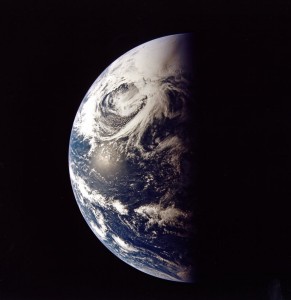
Earth as seen from Apollo 13. Credit: NASA
As it turned out, they were now set to miss Earth not by the original 40,000 miles they were worrying about, but by 60,000 miles. Something had to be done, and without the help of those “exotic” systems they’d been forced to switch off to preserve power.
In an unusual piece of good fortune for Apollo 13, there was one emergency manoeuvre, tested on Apollo 8, that could help them – and as luck would have it, it was actually Jim Lovell who had helped to develop it. The procedure involved getting Earth in the window of the LM, and using the Earth’s terminator (the line when day and night meet), as a navigational aid, allowing them to fire the engine and change course, as famously (though somewhat overdramatically) depicted in the film ‘Apollo 13’.
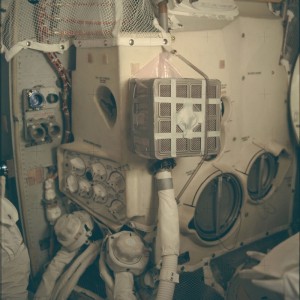
Apollo 13 Lithium Hydroxide Canisters. Credit: NASA
More accurate was the portrayal of the issue of the crew being poisoned by the carbon dioxide in their own exhalation. The CO2 scrubbers in the LM were round, but in the control and service module they were square, and since you (in this case literally) can’t put a square peg in a round hole, a team on the ground worked hard to find a way of converting one into the other, using filters, duct tape and other bits of kit available to the crew in order make it work. They sent up these instructions and the crew was able to solve the problem.
There were still concerns about landing. Had the heatshield been damaged? Would the pyrotechnics deploy the parachutes after having been so cold? Thankfully the the crew splashed down safely, ready to be picked up by the aircraft carrier US Iwo Jima.
Once onboard they radioed back to Johnson Space Center in Houston – “they were happy, but probably ripped up all the obituaries they wrote for us” says Lovell.
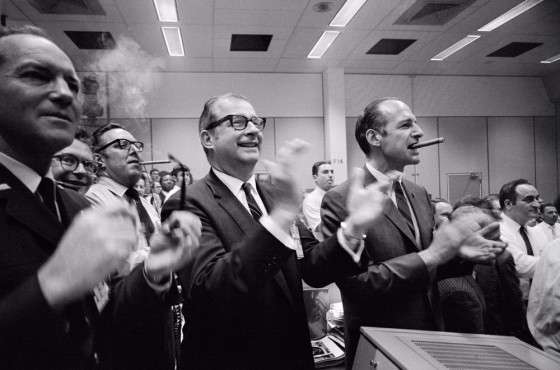
Dr. Thomas Paine (center of frame) and other NASA staff members applaud the successful splashdown of the Apollo 13 mission.
Apollo 13 had made headlines around the world, with millions of people praying for the crew’s safe return, and 55 countries offering water rescue assistance. “Even Paraguay and Czechoslovakia offered their help” says Lovell, “and they don’t even have coastlines!”
For years Lovell was frustrated and disappointed not to have stepped foot on the Moon, but now he’s had a change of perspective. “Apollo 13 brought out what we could do in a crisis” he says.
He explains how he often wonders what would have happened if Apollo 13 had been successful. “It dawned on me that perhaps the best thing that could have happened was the explosion”.
“Without the explosion, there would be no ‘Houston we have had a problem’, no ‘Failure is not an option’”.
“We’d have picked up some rocks, said some forgettable words, and been forgotten”.

